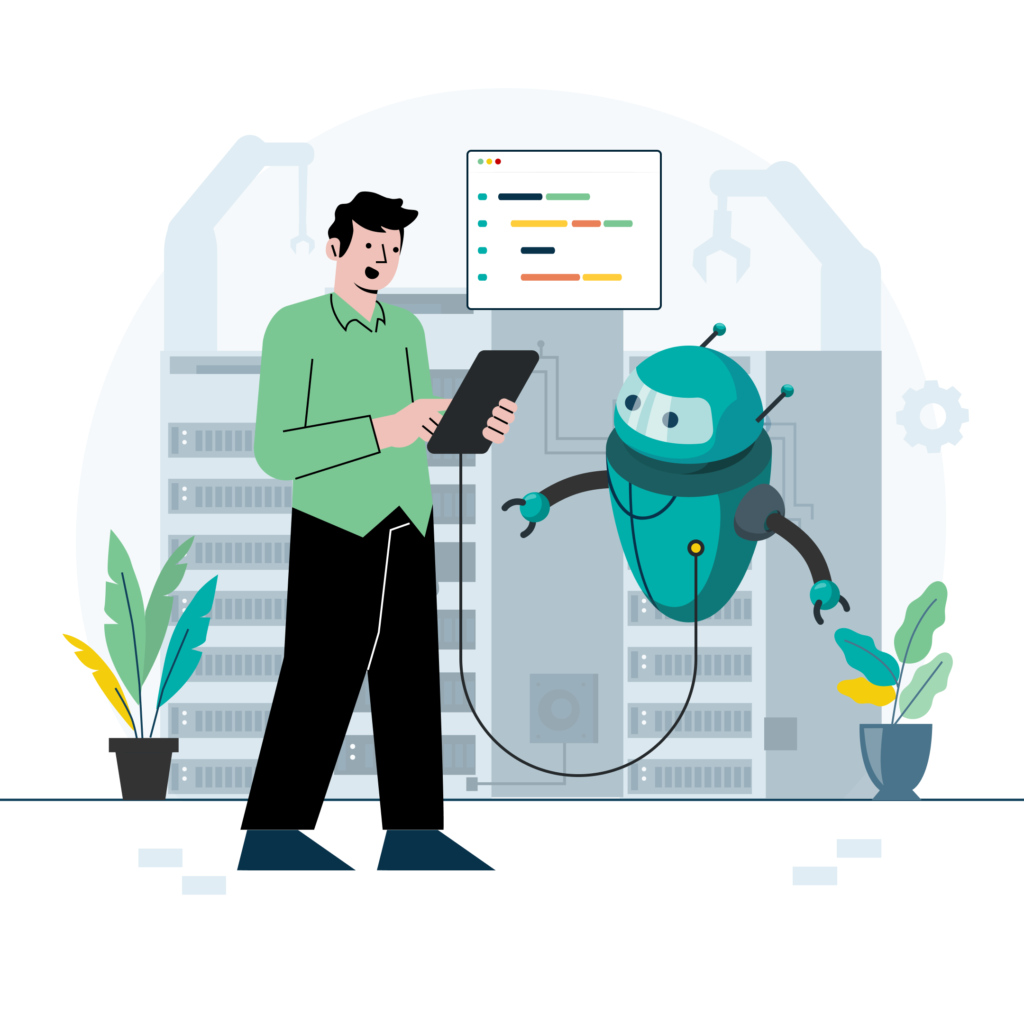When you step into a CTO role, you inherit systems, architecture, and a culture built on professional accountability. Deadlines loom. Performance reviews matter. Code ships because someone’s job depends on it.
But there’s another world of software development running in parallel—one where nobody gets fired for missing a deadline, where contributors vanish for months without explanation, and where some of the infrastructure powering your production systems gets maintained by volunteers you’ll never meet.
Open source development operates on fundamentally different social dynamics than commercial software teams. Understanding these dynamics matters when you’re making decisions about dependencies, choosing contribution policies, and figuring out what lessons from open source actually apply to your teams.
The Volunteer Paradox: Why People Work for Free
Why do skilled developers donate thousands of hours to projects that generate zero income?
Traditional employment is straightforward: work for money. Open source contributors participate for reasons that sound almost naive in corporate contexts—because a project solves a problem they have, because they want to learn from better developers, because public contributions build reputation in ways that private corporate code never can.
This motivation structure creates unexpected quality patterns. In commercial development, code quality correlates with management attention and allocated time. In open source, quality follows passion and peer pressure in roughly equal measure. The Linux kernel maintains high standards not because Linus Torvalds can fire people, but because getting code merged requires surviving public technical scrutiny from some of the world’s best systems programmers.
The paradox: volunteers often hold themselves to higher public standards than employees do in private codebases. Your team might accept a hack with a TODO comment to hit a sprint deadline. An open source contributor submitting that same code faces permanent public record of their choices and direct feedback from maintainers who owe them nothing but technical honesty.
Governance Without Hierarchy: How Decisions Actually Get Made
When volunteer contributors operate without employment hierarchy, they need different mechanisms for making decisions.
Most CTOs operate within clear authority structures. You might consult widely, but ultimately you can make calls about architecture, tooling, or priorities. Open source projects rarely work this way.
Consider Python’s governance journey. For decades, Guido van Rossum functioned as Benevolent Dictator for Life, providing clear final authority. When he stepped down in 2018, the community didn’t just elect a replacement—they fundamentally reimagined governance, creating a steering council model. The transition revealed something commercial organisations often miss: successful open source projects develop sophisticated political systems precisely because they can’t rely on managerial authority.
These governance patterns create distinctive code quality characteristics. Without a manager to overrule technical disagreements, open source communities resolve disputes through rough consensus, technical demonstration, and sometimes painful forks. This feels inefficient compared to a CTO calling the shot, but it produces stability. Core architectural decisions in mature projects like PostgreSQL or Linux rarely get revisited because they survived community scrutiny from multiple perspectives.
The lesson isn’t that commercial organisations should copy these governance models directly—you still need someone who can make calls when consensus fails. But understanding how open source projects make decisions without hierarchy helps explain why these codebases often age more gracefully than corporate ones. Every significant choice faced extended technical debate from multiple stakeholders, not just approval from the current technical leadership.
The Bus Factor Reality: Fragility Behind Robust Software
Those volunteer dynamics and distributed governance create another dynamic: some libraries your production systems depend on are maintained by exactly one person, who might lose interest tomorrow.
The 2014 Heartbleed vulnerability exposed that OpenSSL, securing a vast portion of internet traffic, was maintained by a tiny team operating on minimal funding.
This fragility creates an interesting code quality dynamic. Volunteer maintainers often practice conservatism precisely because they understand their bus factor. When changing code means you’re personally responsible for any breaks across thousands of downstream users, you adopt careful practices. That ancient, seemingly unmaintained library might be stable not because it’s perfect, but because the maintainer knows any change risks disaster they’d have to personally address.
Commercial organisations typically solve the bus factor problem with redundancy—multiple team members who understand each system. Open source projects can’t hire redundancy. Instead, they evolve different resilience patterns: extensive test coverage, conservative change policies, and sometimes accepting that projects become stable but dormant.
For you as a CTO, this creates a complex dependency evaluation calculus. A library maintained by a single volunteer for a decade might actually be lower risk than a corporate-backed project where the company could simply lose interest and abandon users. But you need to evaluate very different risk factors.
Code Review as Social Performance
Code review in commercial teams serves quality control, knowledge sharing, and sometimes political purposes. In open source, code review is pure public performance—visible indefinitely, judged by a global audience of peers.
This visibility changes behaviour. Maintainers invest more care in review comments because those comments reflect on their technical judgment and interpersonal skills. Contributors polish submissions more carefully because accepting a review comment means acknowledging a mistake in public record. Disagreements require diplomatic technical arguments rather than appeals to authority.
Mature open source projects maintain consistent code quality despite constant contributor turnover. New contributors learn standards not from style guides (though those exist too), but from observing how maintainers review others’ submissions. The review process itself becomes documentation of standards and collective values.
Compare this to commercial code review, where the same two teammates might review each other’s code for years with gradually degrading standards. Code quality improves when developers know their work will face scrutiny from respected peers rather than just their direct manager.
Some CTOs have tried replicating this dynamic by making internal code reviews more public across the organisation. Results vary, but the approach can work.
The Contributor Lifecycle: Understanding Community Turnover
Commercial software development plans for relatively stable teams. You hire people, hope they stay for years, and worry when key employees leave. Open source projects build knowing most contributors will eventually vanish.
This acceptance of constant turnover shapes development practices. Successful projects invest heavily in documentation not because maintainers are naturally more diligent, but because they know they’ll constantly onboard newcomers. Code architecture stays more modular because the person who wrote a component probably won’t be available when it needs changes. Testing becomes important because you can’t simply ask the original developer what their code does.
The contributor lifecycle follows predictable patterns. New contributors start with tiny fixes—typos in documentation, minor bug fixes—testing the community’s responsiveness. If maintainers provide encouraging feedback, contributors might attempt larger changes. Eventually some contributors become trusted enough to gain commit access, but even then, life circumstances mean most eventually reduce involvement.
For you, this lifecycle offers lessons about sustainable team practices. Open source projects survive constant turnover by building systems that don’t depend on specific individuals’ knowledge. Commercial organisations with better retention can afford more informal knowledge transfer, but adopting open source practices around documentation and modularity provides insurance against inevitable team changes.
When Passion Fades: The Maintenance Crisis
The volunteer motivation structure that creates open source’s strengths also creates its sustainability crisis. Projects start because someone passionate about a problem writes code. But passion fades, life circumstances change, and suddenly infrastructure has an unmotivated or absent maintainer.
This creates different code quality patterns than commercial contexts. Commercial software with declining attention typically accumulates technical debt. Shortcuts get taken under deadline pressure. Refactoring gets postponed. Test coverage degrades.
Open source projects facing maintainer burnout show different symptoms: perfect stability with no new features, growing issue backlogs, pull requests languishing unreviewed.
The code itself might be excellent—maintained by someone who cared deeply during active development—but it stops evolving. Security updates slow or stop. Compatibility with new platforms lags. The codebase becomes an increasingly perfect snapshot of an earlier era’s needs and practices.
Some projects solve this through foundation funding—turning volunteer maintenance into paid work. Others attract corporate backing once they become infrastructure people depend on. But many simply persist in what Nadia Eghbal calls “zombie mode”—still functioning, technically available, but with no active development.
When evaluating dependencies, understanding these maintenance patterns matters. A well-designed library with a burned-out maintainer poses different risks than actively developed code with quality issues. You need to assess not just code quality but community health: Are maintainers responsive? Do multiple contributors share responsibility? Does the project have succession planning?
What Commercial Organisations Can Actually Learn
Open source offers lessons for commercial development. Direct translation rarely works though—the underlying incentive structures differ too fundamentally. But adapting certain principles can improve your teams.
Companies that contribute to open source need to understand the cultural differences. Corporate contributors might push for features their employer needs quickly, while volunteer maintainers prioritise long-term stability. Companies might submit large, complex changes that work perfectly for their specific use case but create maintenance burden. The companies that contribute most effectively treat it as genuine collaboration, not just a way to get free labour on their priorities. They invest in community relationships, accept maintainer feedback even when inconvenient, and contribute back improvements rather than just taking.
For your internal development, some principles translate well:
Organisation-wide code review—even if not truly public—raises quality bars. When developers know their code will be judged by respected peers across the company, they invest more care than when reviews stay within small teams.
Explicit documentation of architectural decisions helps during team transitions. Open source projects write down reasoning that commercial teams often leave in Slack history or people’s heads. When your principal engineer leaves for a startup, you’ll wish you’d adopted open source documentation habits.
Contributor-friendly practices make onboarding more efficient. Open source projects assume new contributors know nothing about internal conventions, so they document everything. Commercial organisations with good retention often let documentation slip, then pay the cost during rapid growth.
Modular architecture that minimises component coupling survives organisational change better. Open source projects architect for the reality that component maintainers will change or vanish. Commercial organisations can afford tighter coupling when teams are stable, but instability costs compound quickly.
The approach isn’t to replicate open source practices wholesale. It’s to understand which quality patterns emerge from volunteer dynamics and which actually solve problems your teams face too.
For CTOs building open source contribution programs, this means cultural translation. Your team’s internal code review standards might need adjustment for external contribution—more documentation, more consideration of edge cases, more patience with maintainer feedback cycles. But the benefits extend beyond the specific projects you contribute to: engineers exposed to open source code review develop stronger technical communication skills and learn standards from some of the best developers in the world.
Conclusion: Two Development Cultures, Different Quality Patterns
Open source development and commercial software engineering represent fundamentally different approaches to the same craft. Volunteer dynamics create quality patterns that look strange from corporate perspectives—conservatism in some areas, surprising neglect in others, public scrutiny alternating with extended silence.
Understanding these dynamics helps you make better decisions. You evaluate dependencies better when you understand what motivates maintainers and what signals indicate sustainable projects. You design better contribution programs when you recognise that open source communities operate on different social contracts than employed teams. You adapt the useful lessons—public review, explicit documentation, modular architecture—while avoiding cargo cult adoption of practices that only work in volunteer contexts.
The next time you evaluate a dependency, don’t just check GitHub stars or download counts. Look at the community: Are multiple people reviewing pull requests? Do maintainers respond thoughtfully to issues? Does the project have explicit governance for how decisions get made? These community health signals matter as much as code quality metrics.
Understanding both commercial and open source models on their own terms lets you make better decisions about which dependencies to trust and which lessons to apply to your own teams.











